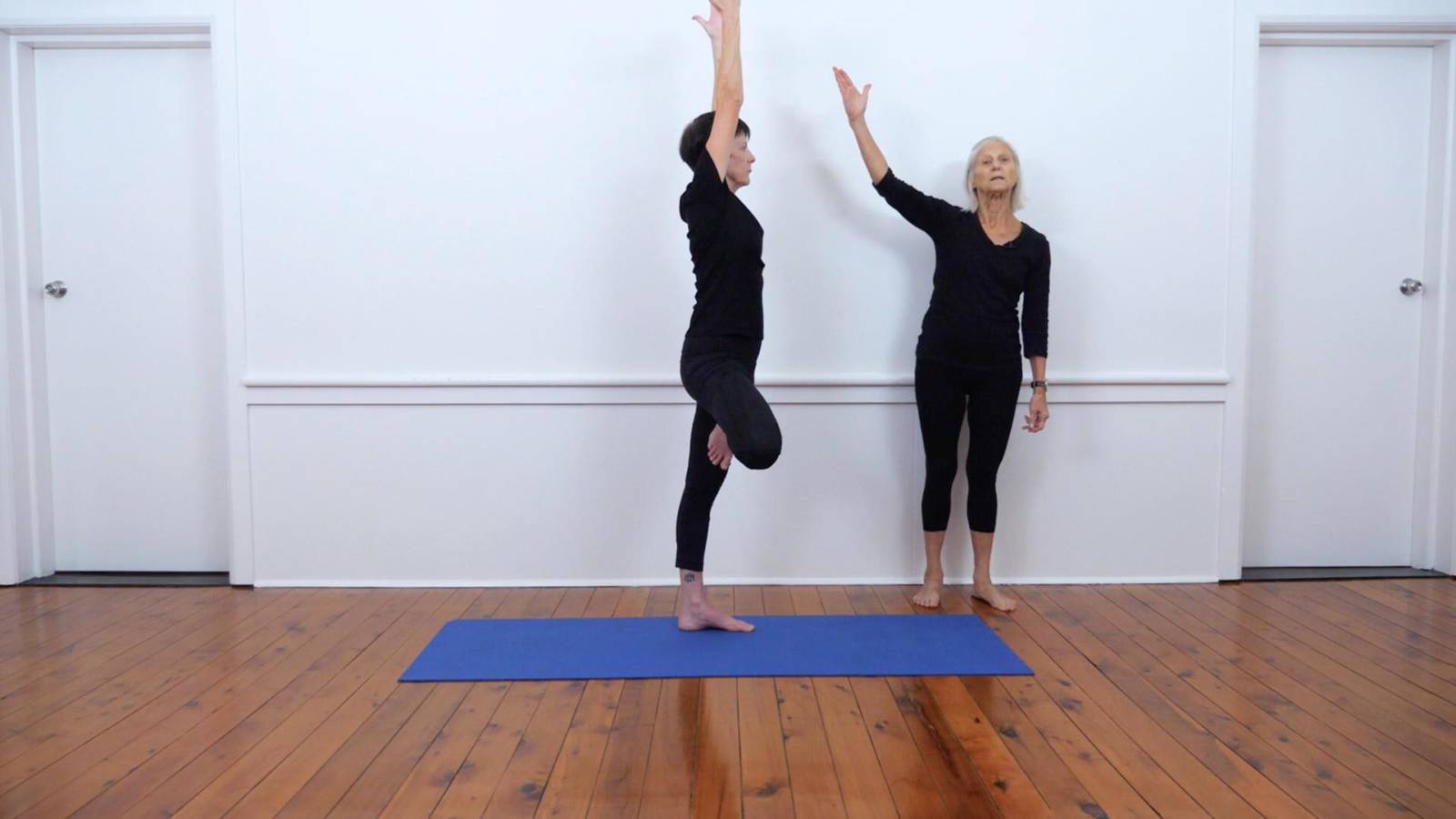What is Vrksasana?
Vrksa means tree. This asymmetrical standing pose builds poise and balance as the practitioner learns to stand on one leg, drawing the spine upward. The shoulder muscles are also toned by this pose, as the arms extend upward.
When to use Vrksasana?
Like Tadasana, this pose firms and stabilises the leg muscles, but it further challenges the practitioner to find stability and evenness balancing on one leg, rather than two. Because the raised leg is turned out, this pose begins to work on the hips, and can be used in a sequence that leads towards deeper hip openings. In the classical posture, the palms are pressed together, and the elbows remain straight (Urdhva Namaskarasana). If the elbows are bending, it is better to practice initially with palms shoulder distance apart, to first bring more opening and suppleness to the shoulder region.

